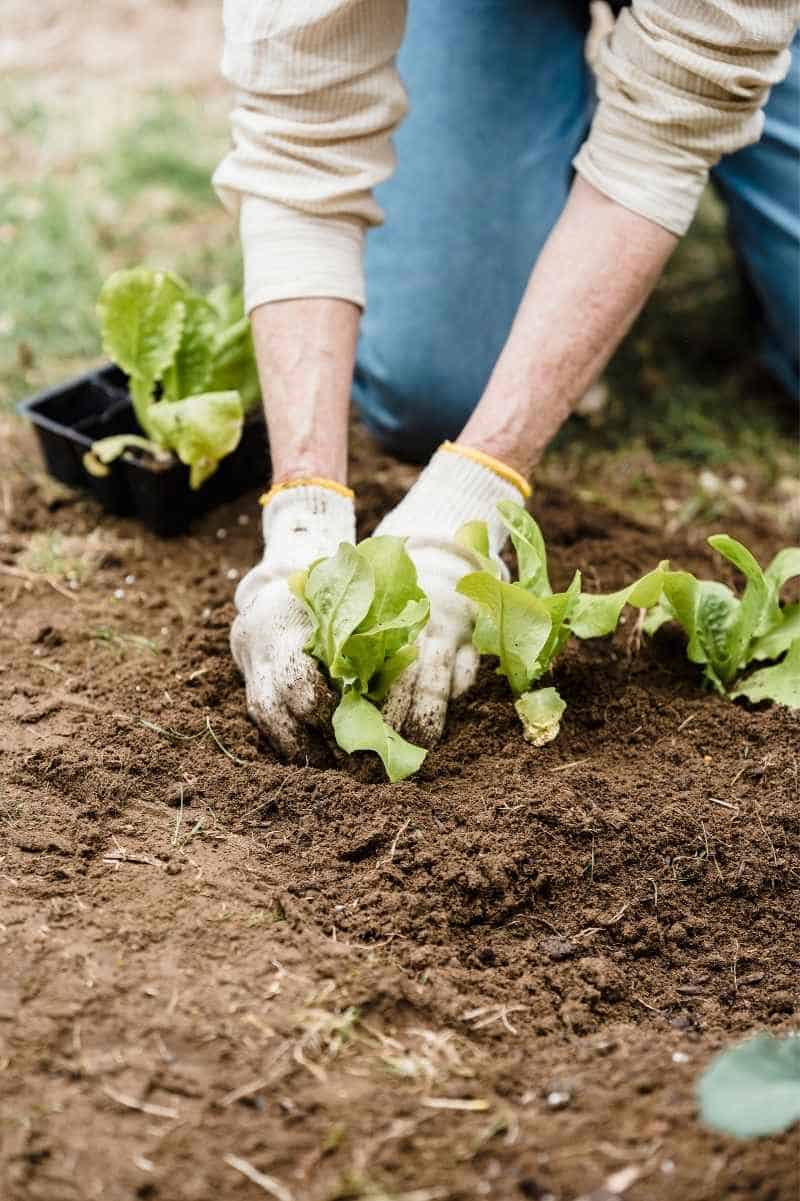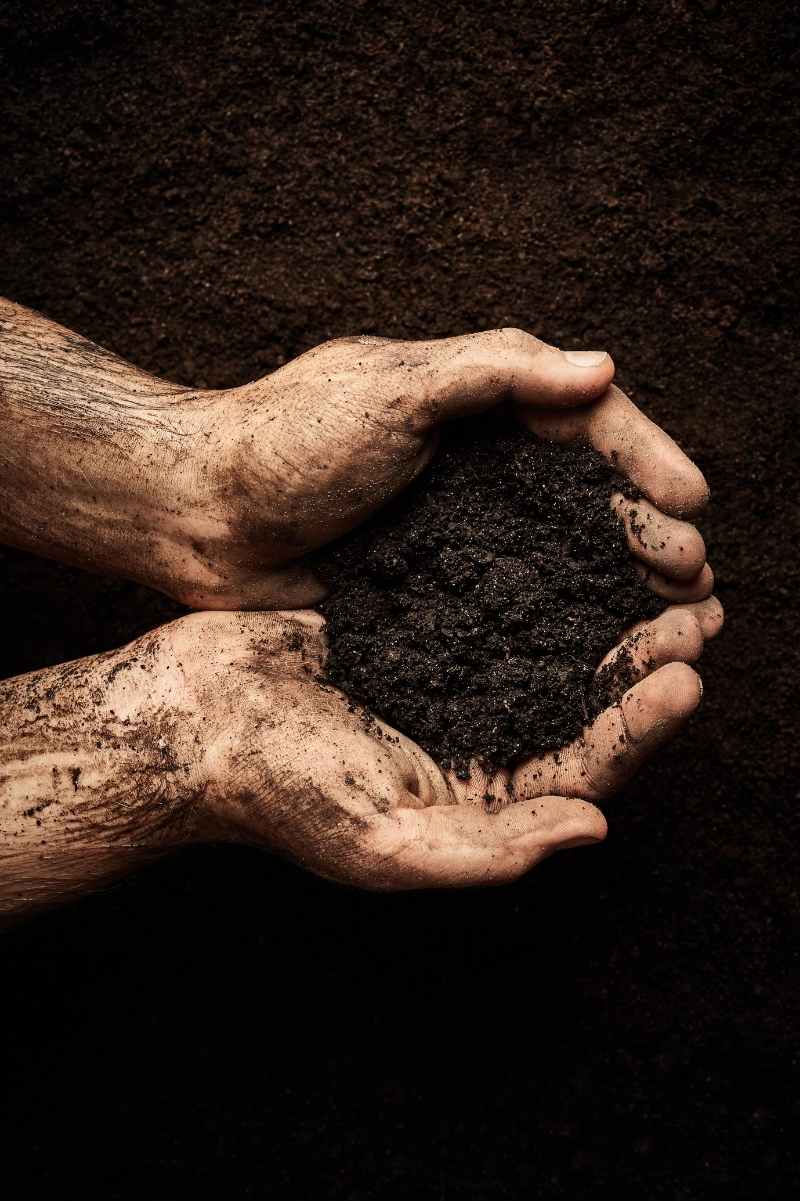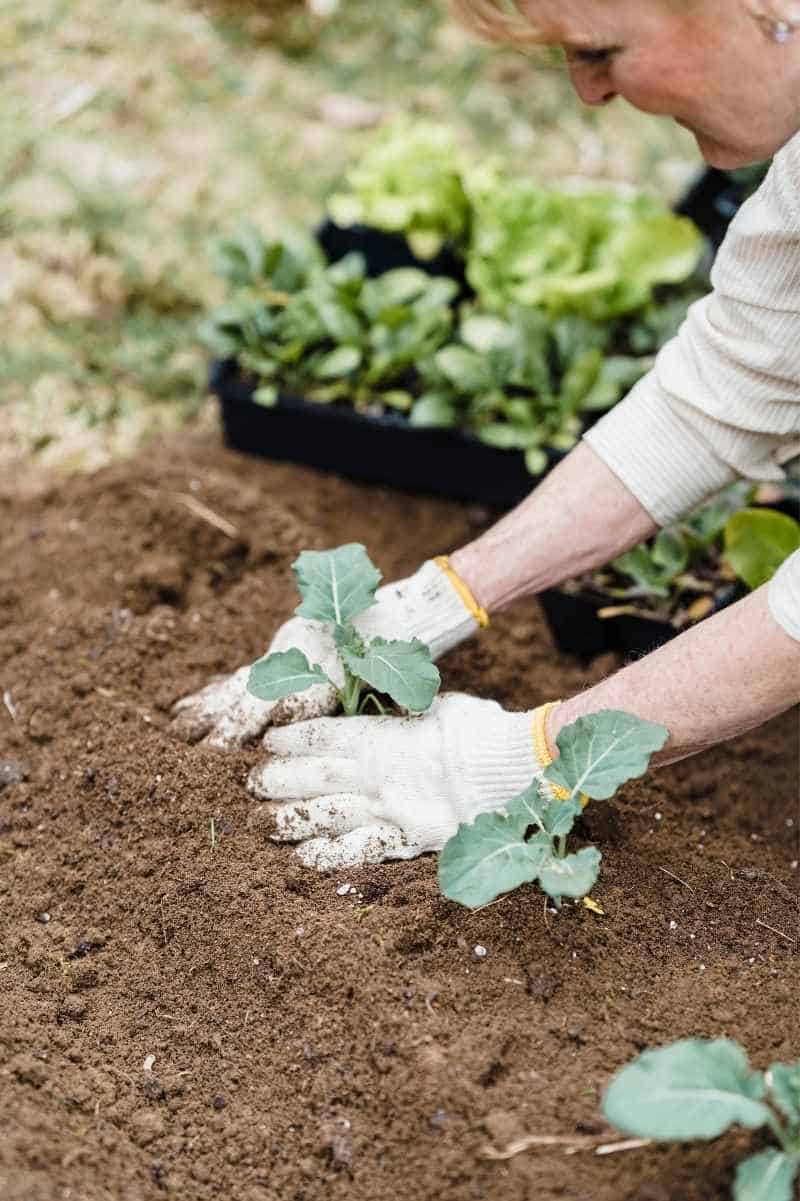Soil is the foundation of food production. Learn how to add potassium to soil to help plants grow bigger, better, and more healthily.
There are three macronutrients gardeners keep an eye on—NPK, or nitrogen, potassium, and phosphorus. There is a lot of buzz out there about the nitrogen levels of your soil (which are important), but a lot of folks neglect to talk about potassium. We’re going to cover why you need to stay on top of your potassium levels to grow lush, healthy, productive plants!

Table of Contents
Why do plants need potassium?
Potassium is an essential nutrient for plant growth. Potassium helps plants with the movement of water and nutrients throughout the plant tissue. It also helps with the exchange of water, oxygen, and carbon dioxide in a plant. A good level of potassium helps a plant:
- Improve drought resistance
- Increase root growth
- Reduce wilting from water evaporation
- Photosynthesize
- Prevent disease
Signs of a potassium deficiency
The most recognizable symptom of a potassium deficiency in plants is that the leaves will look brown and scorched on the edges. You may also notice chlorosis, or yellowing, between the leaf veins or along the leaf margins. Typically, the oldest leaves will look scorched first.
Can soil have too much potassium?
It is possible to over do it with potassium in your soil. Not only is this bad for your plants—it can affect the way your plants uptake other nutrients—but it can also be bad for our planet. Excess potassium can run-off into waterways leading to increased algae blooms, which can cause harm to aquatic life.

Soil testing for potassium deficiencies
A good quality lab soil test will tell you all about the micronutrient levels in the soil, including potassium levels. We dive into soil testing a lot more in our soil health primer. Though you may be tempted to do an at-home test kit instead, we don’t recommend them—they are pretty unreliable for everything other than soil pH.
Growfully Protip
To get a soil test, check with your local county extension office—most have access to soil testing labs and can supply you with materials, discounts, and advice on reading your results. If that’s not an option, our favorite lab for soil testing is Waters Agricultural Laboratories.
Which number is potassium in a fertilizer?
The numbers on most fertilizer packages are the NPK ratio, or the concentrations of nitrogen (N), phosphorus (P), and potassium (K). The numbers are listed in N -P-K order, so for potassium, you want to look for the third number on the label. A fertilizer labeled 10-0-5 would have 10% nitrogen, 0% phosphorus, and 5% potassium, for example.

What is the best way to add potassium to my garden?
Like most nutrients in the garden, there are a ton of ways to increase potassium. The first thing we’re going to recommend is that you keep adding lots of organic matter to your garden. While organic matter isn’t packed with potassium, it is a good way to gently adjust your soil over time and improve soil condition. Rich compost and well-rotted manure are two great options!
Here are our favorite potassium-rich amendments:
- Alfalfa Meal: This is basically ground up dried alfalfa plants, and it adds a small boost of all macronutrients and many micronutrients. It’s slow release, so it’s best to use at the beginning of the season for a full-season supply.
- Greensand: Greensand lives up to its name! This green-tinted sand comes from naturally occurring marine deposits and is a great addition to increase potassium and micronutrients. Because of its sandy texture, it’s also a good addition if you need to condition your clay soils.
- Wood Ash: Regular, clean, dry wood ash from your fireplace will provide a quick dose of potassium to your garden. Make sure only hardwood was burned (not fire starters, lighter fluids, etc.) and make sure to use the ashes sparingly. Avoid using wood ash if your soil is alkaline, as it tends to raise soil pH.
- Potassium Sulfate (Sulfate of Potash): This is easily the quickest way to solve a large potassium deficiency in your garden. Not all brands of Potash are organic, so make sure to look for organic labelings before you add it to your garden.
- Sul-Po-Mag: This naturally-occurring mineral called langbeinite (AKA: sulfate of potash-magnesia) is water-soluble. It’s a good option if your soil tests show low levels of magnesium and sulfur (it will not reduce soil pH).
- Granite Dust: You can grab stone dust from local quarries or garden centers. It’s a great source of many minerals and nutrients (including potassium) although most of those nutrients are locked up tight—meaning they aren’t immediately available for the plants to use. We recommend applying stone dust in the fall as a slow-release addition of potassium.
Growfully Protip
Banana peels became all the rage recently on social media as a miracle fertilizer! While banana peels are packed with high level of potassium and other nutrients, the science is still out on if that translates to good fertilizer for our plants. We recommend you add your banana peels to your compost like usual and get the goodies from those peels that way.

When should I add potassium to my garden?
In general, we recommend that you do all soil adjustments in the fall—this gives time over the winter for the amendments to “take” so your soil is ready to grow come spring. That being said, we understand that sometimes life gets away from you and you can’t get around to it until spring planting. If that’s the case, use a rapid potassium amendment (like potassium sulfate) to get you through until fall—and then amend your beds with a slow-release potassium fertilizer like alfalfa meal or granite dust.
What is the fastest way to add potassium to soil?
Potassium Sulfate (Sulfate of Potash) is going to be your fastest way to correct low potassium. This powerful stuff contains 50% potassium and is released rapidly.
Growfully Protip
Want the breakdown of all the organic soil amendments you can use to improve the nitrogen, phosphorus, and potassium levels in your soil? Our Soil Health Printable is for you!
What plants should I not fertilize with extra potassium?
We highly recommend not doing any soil amendments in your garden until you have a full soil test complete—this not only will save you money and time, but it also will help keep your plants and our planet health (over fertilization is a real issue). That being said: potassium is an essential nutrient to all plant growth, and it’s important to make sure you have balanced potassium levels for all plants in your garden.








